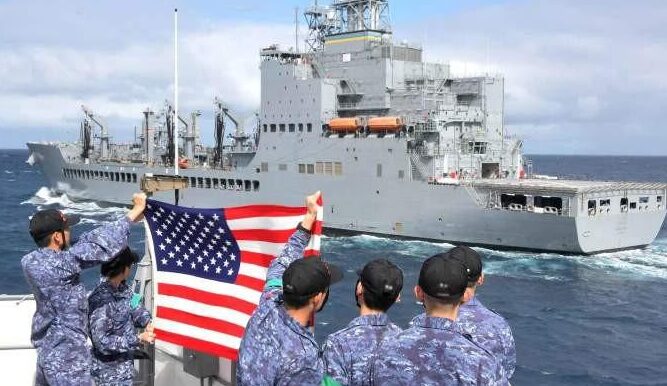New York: The US Navy’s ambitious plan to build a fleet of unmanned sea drones has run into serious trouble after a series of botched test runs ended in crashes, software glitches, and rising doubts about the program’s future.
During trial runs off California last month, one drone vessel slammed into another, vaulted over its deck, and crashed back into the water an accident caught on video and verified by Reuters. The vessels were built by US defense tech rivals Saronic and BlackSea Technologies.
That was not the only mishap. Just weeks earlier, in a separate Navy test, a support boat capsized after a BlackSea drone it was towing suddenly accelerated, throwing the captain into the water. The captain was quickly rescued and was unharmed.
People familiar with the tests say both accidents were triggered by a mix of software malfunctions and human error. Neither the Navy nor the two companies involved commented on the incidents.
Why these drones matter
Military leaders have been pushing hard to develop autonomous fleets after seeing how effective sea drones have been in Ukraine, where small, low-cost, remote-controlled boats have inflicted heavy damage on Russia’s Black Sea Fleet.
The US, however, wants to go further by creating fully autonomous swarms of naval drones that can operate without human control—a much more complex and costly task. While Ukrainian sea drones cost around $250,000 each, US prototypes can run into several million dollars.
Bryan Clark, a naval warfare expert at the Hudson Institute, said the recent failures highlight how difficult it will be to field such systems. The Navy, he added, will need to adjust its tactics based on what these drones can and cannot do.
Pentagon troubles pile up
The problems are not just technical. The Navy’s drone program has been hit by leadership upheaval and internal criticism. Its main drone acquisition unit, the Programme Executive Office for Unmanned and Small Combatants (PEO USC), recently lost its top admiral, Rear Admiral Kevin Smith, who was sacked after an internal complaint. The unit itself is now under review and could face restructuring.
Adding to the pressure, Pentagon officials have questioned whether the Navy’s approach is cost-effective. In one closed-door meeting last month, Deputy Defence Secretary Steven Feinberg raised concerns about the program’s value, according to people briefed on the discussion.
Meanwhile, the Pentagon’s Defence Innovation Unit has paused a $20 million contract with L3Harris, a company providing some of the drone software, after the recent test crashes.
Billions on the line
Despite setbacks, the Navy continues to pour money into autonomous technology. The Pentagon launched its $1 billion “Replicator” program last year to acquire thousands of air and sea drones. The Navy has already committed at least $160 million to BlackSea, which is churning out dozens of its Global Autonomous Reconnaissance Craft every month.
Saronic, valued at $4 billion after a funding round backed by major investors, is also vying for contracts with its Corsair drone, though it has yet to secure a large-scale deal.
Acting chief of naval operations Jim Kilby called these systems “critical for the future of naval warfare” during a visit to BlackSea’s facility in June.
The Trump administration has doubled down on the effort. President Trump’s recently passed “Big Beautiful Bill” included nearly $5 billion for maritime drones. Still, the Navy’s execution remains under fire as it tries to overhaul long-standing shipbuilding traditions at high speed.
TX Hammes, an expert at the Atlantic Council, summed it up: “You’ve got a system used to building big things over many years, and now suddenly you’re asking them to move fast.”






